The Breguet Tradition Tourbillon Fusée 7047
Historic precision devices dressed in contemporary garb and unequivocal Breguet style.

Packed with horological inventions developed by the master watchmaker and a fascinating fusée-and-chain transmission, the Tradition Tourbillon Fusée 7047 bares its soul in a surprisingly contemporary suit. Unveiled in 2010, the Tourbillon Fusée belongs to Breguet’s Tradition family, which is inspired by the pragmatic design codes of Breguet’s historic subscription watches. Instead of hiding the mechanics, the Tradition family inverts the movement so you can enjoy it dial side. In this case, we’re looking at two historic and interacting precision-enhancing devices – a fusée-and-chain transmission and tourbillon – that come to life on the dial against a backstage of contemporary titanium and silicon elements and shot-blasted anthracite surfaces. Almost an anachronism, the fusion of past and present make the models in the Tradition family so unique.
A watch for the people
Having fled to Switzerland during the turbulent years leading up to the French Revolution, Abraham-Louis Breguet returned to Paris in 1795 and rebuilt his workshop on the Île de la Cité. Although he was renowned for his remarkably complicated timekeeping creations for European royalty and was already dabbling with marine chronometers, Breguet hit upon a completely new concept to reach a wider audience with his ‘montres de souscription’ (subscription watches). In 1796, Breguet introduced a simple, solid, reliable pocket watch with a large diameter (61mm) and a single hand. The symmetrical movement was characterised by a large central barrel flanked by the gear train and balance wheel. Replicating the straightforward movement design, the simple enamel dial was the essence of sobriety and legibility. What was striking, though, was Breguet’s incorporation of a single hand for the hours and minutes. Given the large diameter of the pocket watch, there was plenty of room to paint a detailed minute track with markings at five-minute intervals. The bezel and caseback were hinged and could easily be opened to set the time and wind the barrel from the caseback, while the decorative guilloché pattern on the sides of the case aided grip.
Breguet even produced a brochure in 1797 to promote the launch: “The price of the watch…will de 600 livres; a quarter of this sum will be payable on subscription; there will thus be no delays in the manufacture, and the delivery will be according to the order of subscription.” The money collected would be used to buy parts for his innovative vision of a mass-production line, and if you’ve ever wondered where crowdfunding came from, here’s your clue.
Tradition collection
Unveiled in 2005, the Tradition collection harks back to Abraham-Louis Breguet’s subscription watches – with a twist. The idea is to showcase elements of the original architecture and mechanisms of the movement on the dial side, including Breguet’s signature bridges. In most Tradition models, the mainspring is positioned centrally and flanked by the gear train and balance wheel. Other common denominators of the Tradition family are fluted casebands, welded lugs, blued-steel Breguet hands and guilloché dial, all hallmark Abraham-Louis Breguet inventions. If you want in-depth coverage of the Unmistakable Signs of Breguet’s watches, don’t miss our video with Emmanuel Breguet, a direct descendant of A.L. Breguet and Vice-President of Patrimony and Marketing, as well as Nakis Karapatis, Vice-President Head of Operations.
Until now, the Breguet Tradition collection has been home to several models: the hand-wound (7057); the GMT (7067); the Automatic Seconde Retrograde (7097); the Chronograph (7077); the Tourbillon Fusée-and-Chain (7047), which we are covering in this article; and the Automatic Retrograde Date (7597).
old & new
Before looking at the spellbinding mechanics, it might be the moment to situate its indications. Although it is also available in an 18k rose gold, the model we have here is the 950 platinum version with a solid gold silvered dial and an anthracite movement. Like other cases in the Tradition collection, the round case has straight welded lugs with screw bars. It measures 41mm across with a height of 15.95mm and is polished throughout. Unlike some of the other models in the Tradition line-up, however, the mainspring barrel is not centred and is placed at 10 o’clock on the dial. The highlight of this model is the spectacular tourbillon mechanism coupled to a fusée-and-chain transmission that you can see on the right side of the dial. The hour and minutes disc is off-centred at 7 o’clock, and the power reserve indicator is situated at 9 o’clock. The slim bezel and high box crystal allow an impressive panoramic view of the dial, and you can appreciate how the tourbillon bridge and dial rise above the mechanics, almost grazing the sapphire crystal.
The anthracite grey alloy that provides the background to the mechanical features on the dial has a matte shot-blasted surface finishing giving it a surprisingly contemporary, dark look. Held firmly in place by a fan-shaped bridge that echoes the bridges used on antique Breguet pocket watches, the barrel drum (fitted with two mainsprings for a 50h power reserve) features an unusual lever at 10 o’clock that points to an external scale. This unique power reserve indicator, located directly on the barrel drum, features a system of reducer differentials and has been submitted for a patent.
Tourbillon & fusée-and-chain transmission
Although the fusée-and-chain transmission is not among Abraham-Louis Breguet’s inventions, when used in conjunction with a tourbillon, the rate regularity of the movement is optimised. By ensuring a constant torque, the differential gears of the fusée transmit a continuous flow of energy to the movement. The problem with power generated by the mainspring is that when it is fully tensioned, it is high but loses force as it unwinds, translating into accuracy fluctuations. A fusée-and-chain transmission equalises the waning force of the mainspring to ensure that the movement receives a constant supply of energy and consequently a more exact rate.
To give you an idea of how long this device has been around, in Dominique Fléchon’s erudite tome, The Mastery of Time, there is a drawing of a conical fusée designed by Leonardo da Vinci between 1490-1500. As Xavier Markl writes in his article on the dilemma of constant force in watchmaking: “A fusée consists of a cone-shape pulley, linked to a chain coiled around the barrel. The fusée features a spiral thread to receive the chain. Thanks to the increasing circumference of the thread, the diminishing force of the mainspring is compensated (very much like the gearing of a bicycle). As the mainspring unwinds, the chain rolls on the barrel and off the fusée. The increasing leverage of the fusée compensates for the waning torque of the barrel. Fusée-and-chain mechanisms are complex to manufacture, difficult to adjust and thus, rather expensive…and they also require a lot of space.” Viewed from the side, the fusée is like a conical pyramid, and the chain, if you were able to unwind it, does look remarkably similar to a bicycle chain!
tourbillon & Overcoil
Perhaps the invention most people associate with Abraham-Louis Breguet is the tourbillon regulator, which he patented in 1801. Designed to counter the problem of gravity affecting the regularity of a movement, Breguet’s idea was to install the escapement inside a mobile carriage that performed a complete rotation every minute. The one-minute tourbillon of this 7047 model is placed at 1 o’clock, and its thin bar (barette), upper bridge and carriage are all taken from Abraham-Louis Breguet’s earliest sketches. The generously proportioned 17mm titanium tourbillon cage, with a 13mm titanium balance wheel, is secured by a titanium openworked and brushed bridge with a gold chaton and jewel. Another of Breguet’s inventions was the Breguet balance spring, or Breguet overcoil, in 1795. Determined to improve upon Huygens’ flat balance spring of 1675, Breguet improved the isochronism of the balance spring by raising the last coil in the spring and reducing its curvature to become concentric in form. Moving forward more than two centuries, Breguet the brand incorporated lighter, more resilient, anti-magnetic, corrosion and lubricant-free silicon components in the escape wheel and lever.
Fusion of past & present
Reverting to the brand’s origins, the off-centred hours and minutes dial at 7 o’clock with its finely engine-turned Clou de Paris decoration in the centre, classic Roman numerals and open-tipped blued-steel Breguet hands provides a dramatic contrast to the dark shot-blasted background. Again, the caseband displays the elegant fluting we associate with all Breguet watches and the simple round case with its relatively discreet bezel and round-ended straight welded lugs do nothing to detract from the impressive spectacle on the dial. Even the three blued screws securing the silvered 18k gold dial plate hark back to the famous subscription watches, and the serial number is engraved in a small plaque mirroring the plaque at noon with the inscription Breguet. Almost an anachronism, the fusion of past and present is what makes this model unique.
Calibre 569
The reverse side of the case reveals design codes used on Breguet’s subscription watches, but the colours and finishings are modern, combining anthracite-coloured bridges with rhodium-treated wheels. The impressive calibre 569, with 43 jewels and 542 parts, is a hand-wound movement with a 50h power reserve beating at 2.5Hz.
price
The Tradition Tourbillon Fusée 7047 in 950 platinum retails for EUR 184,900 (incl. VAT). For more information, please visit Breguet.

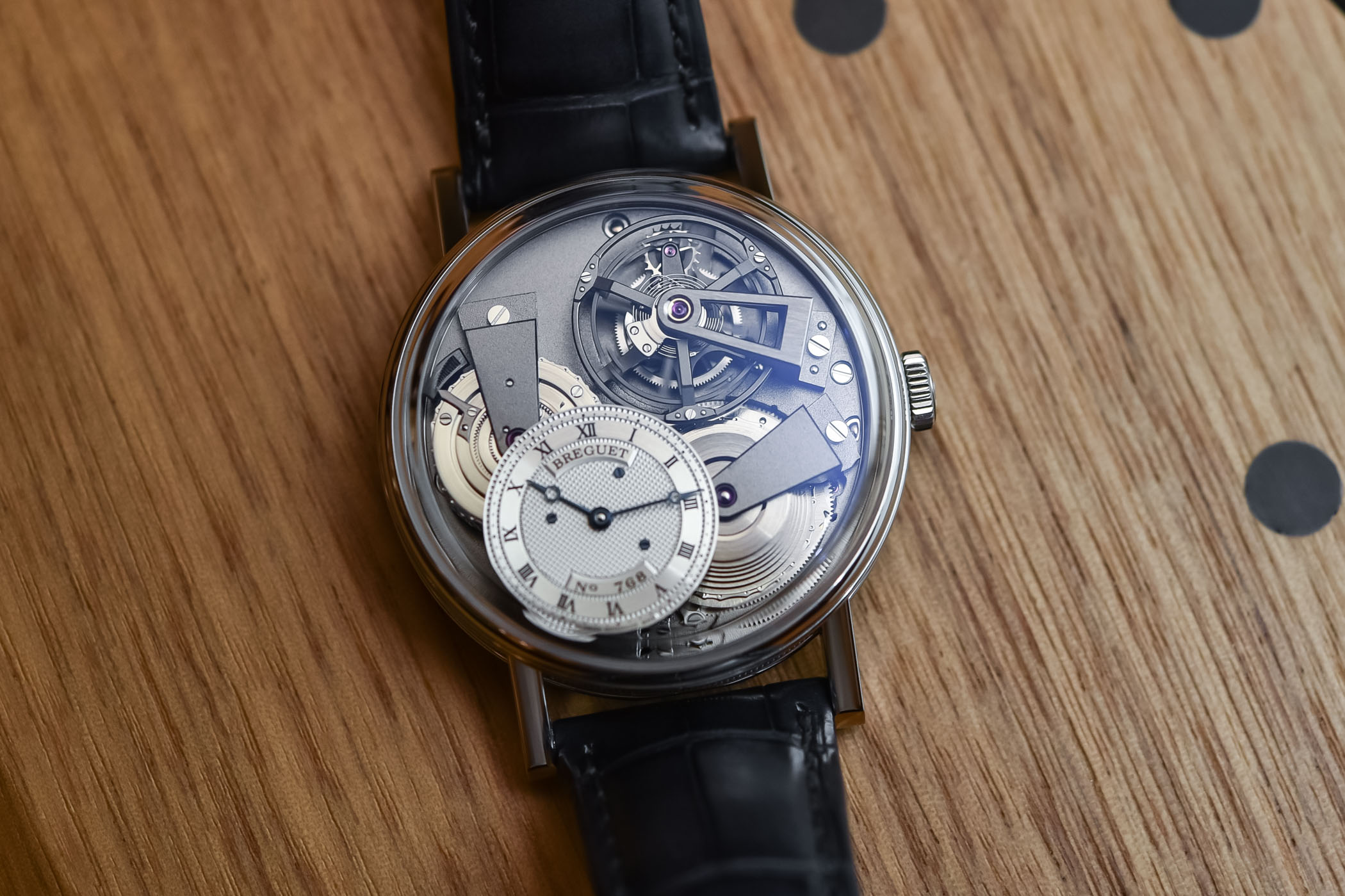

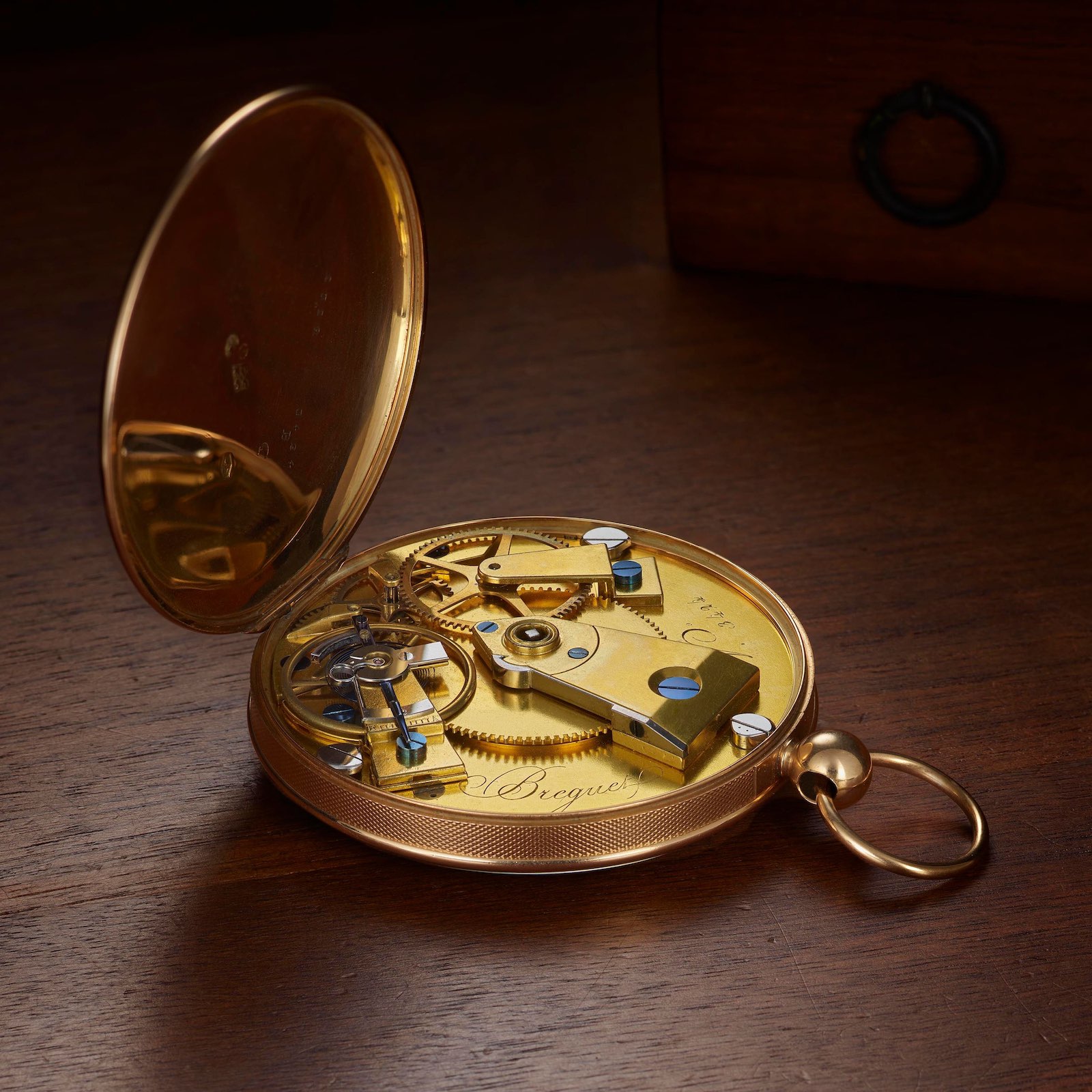
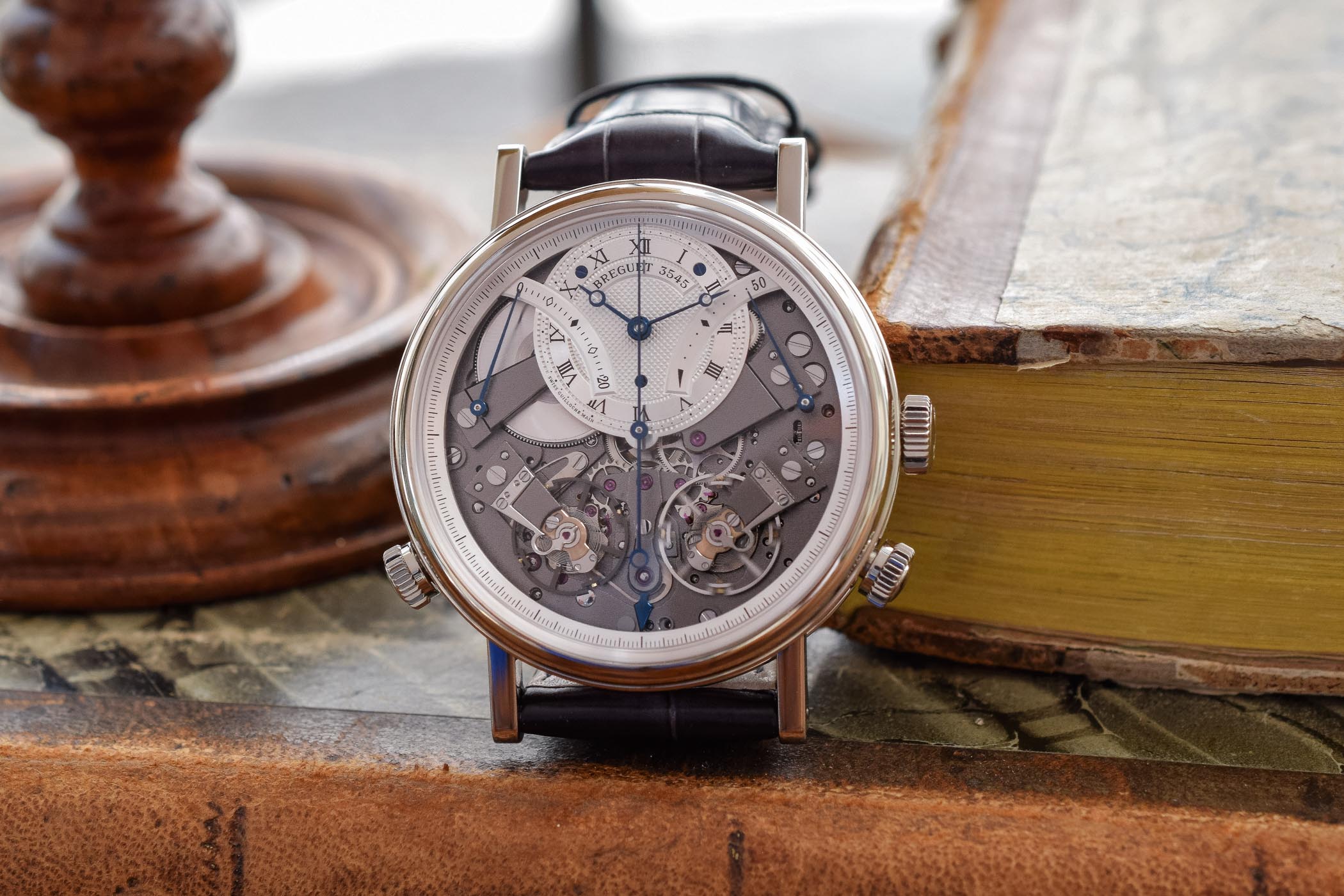
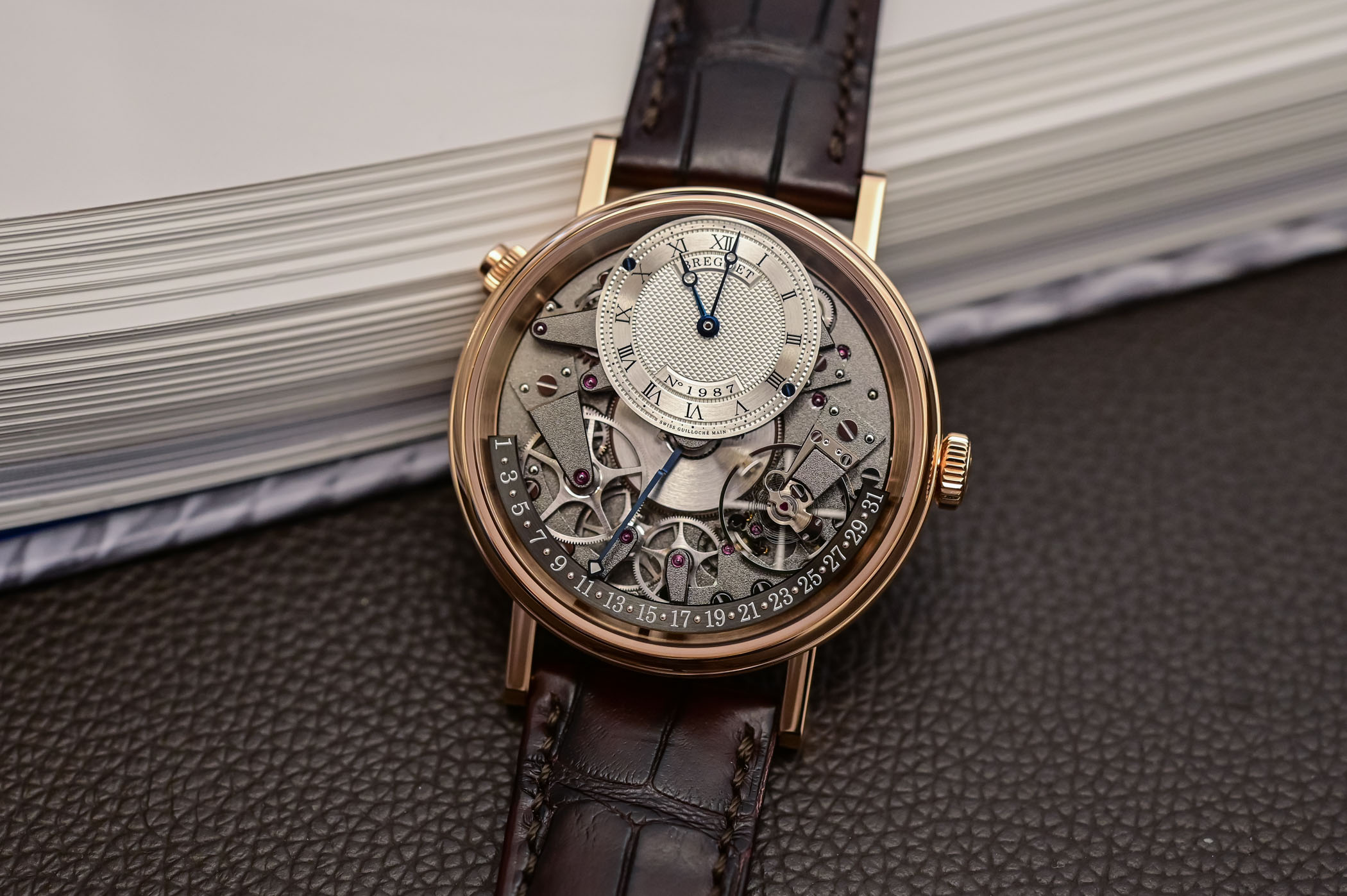
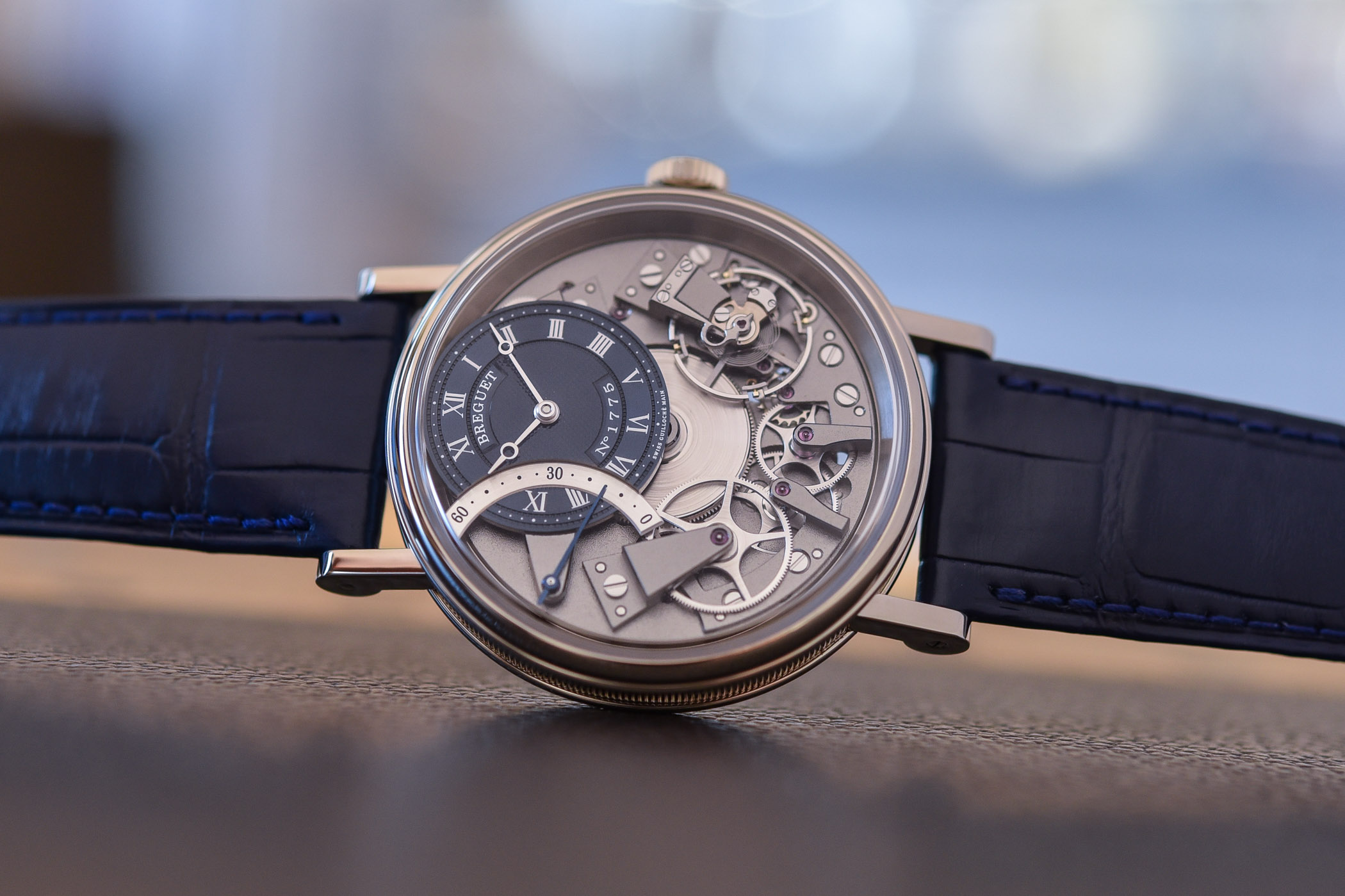
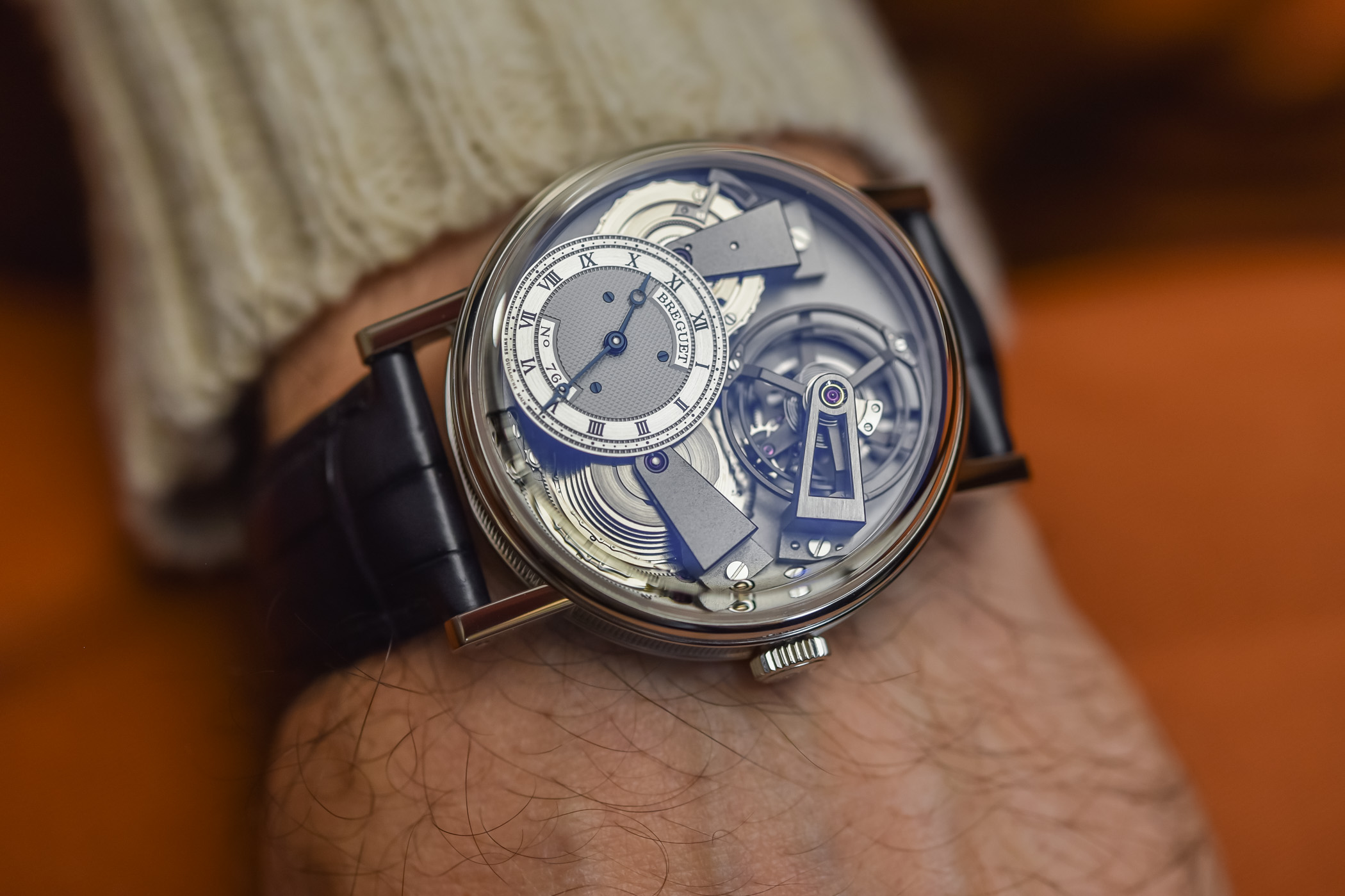
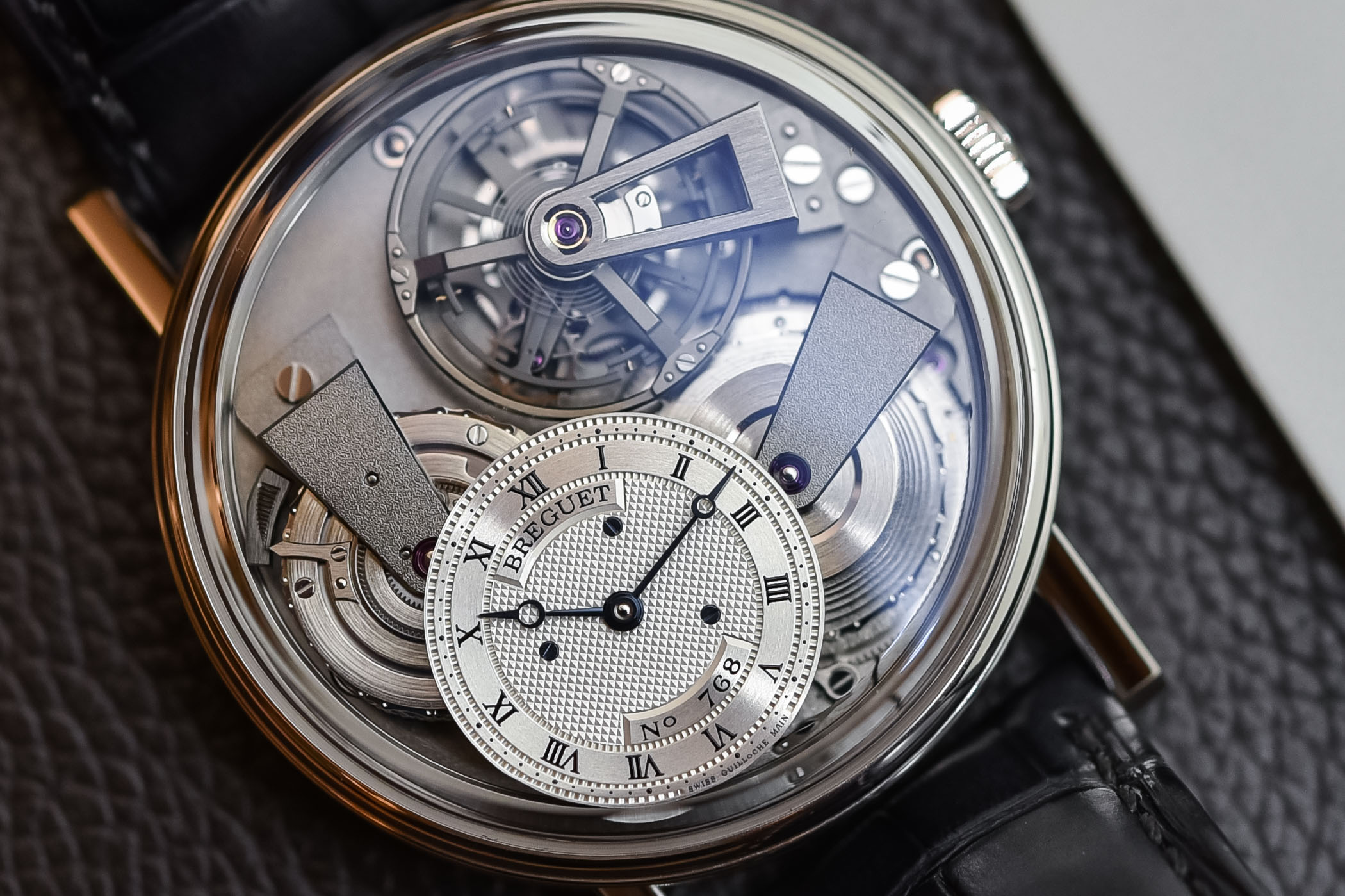
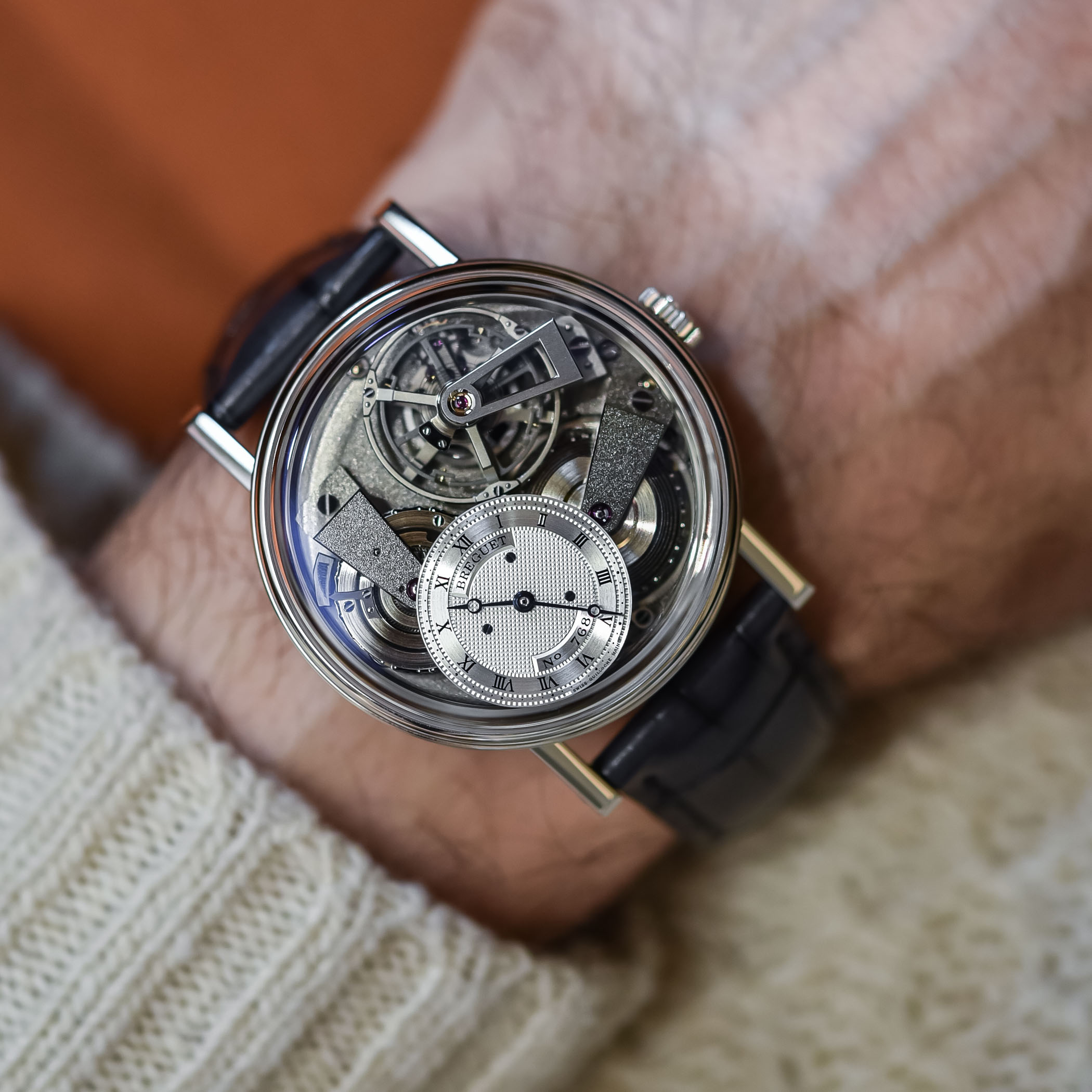
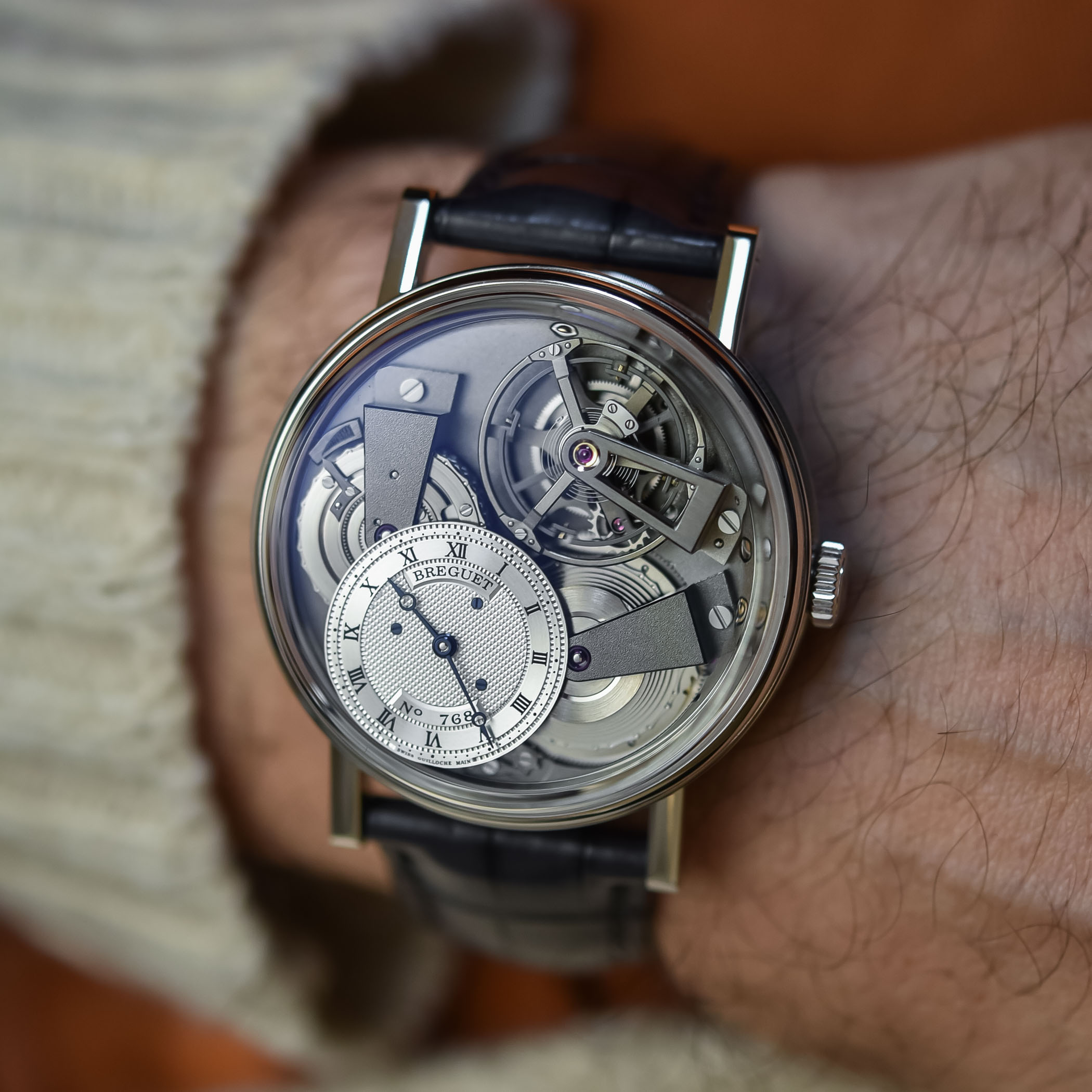
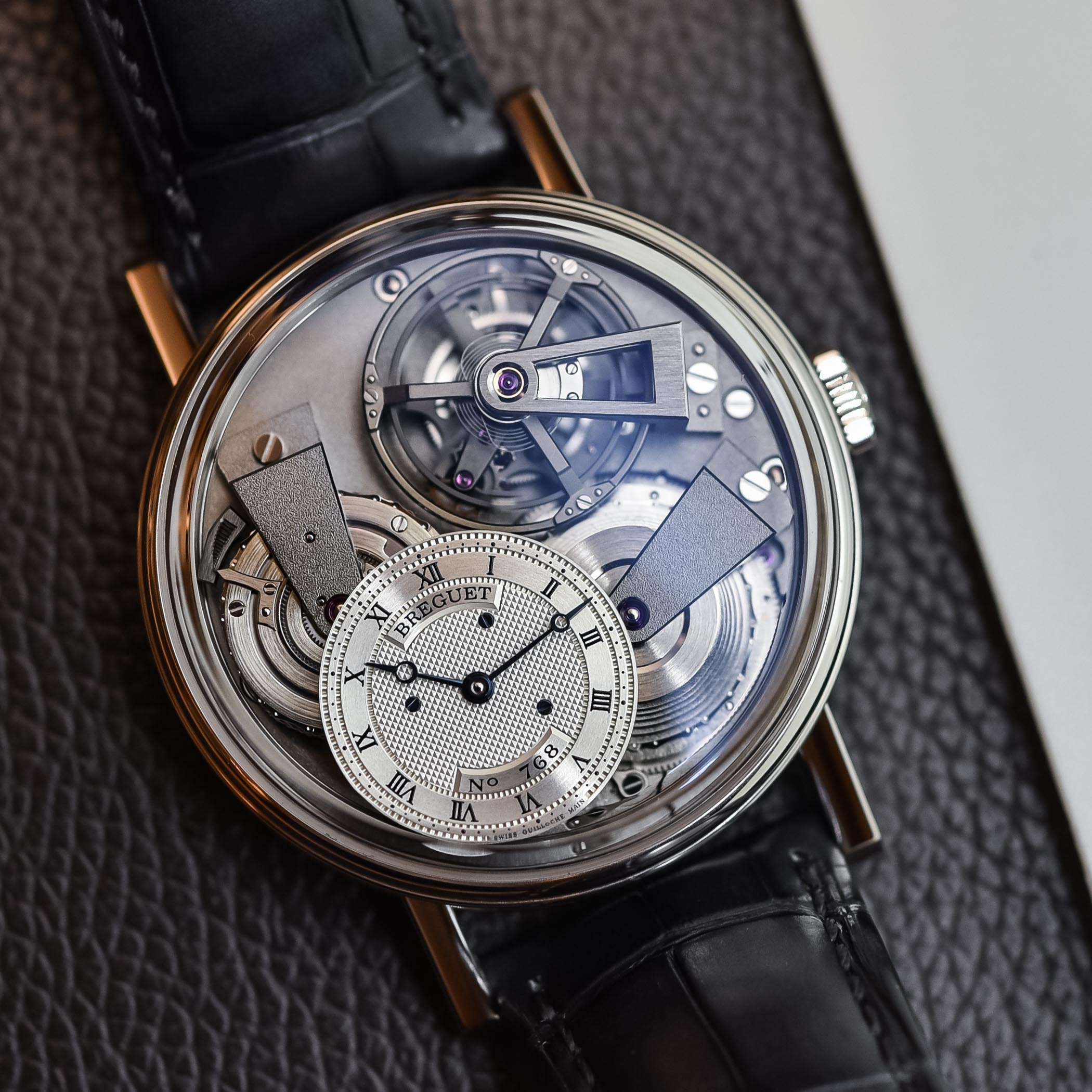
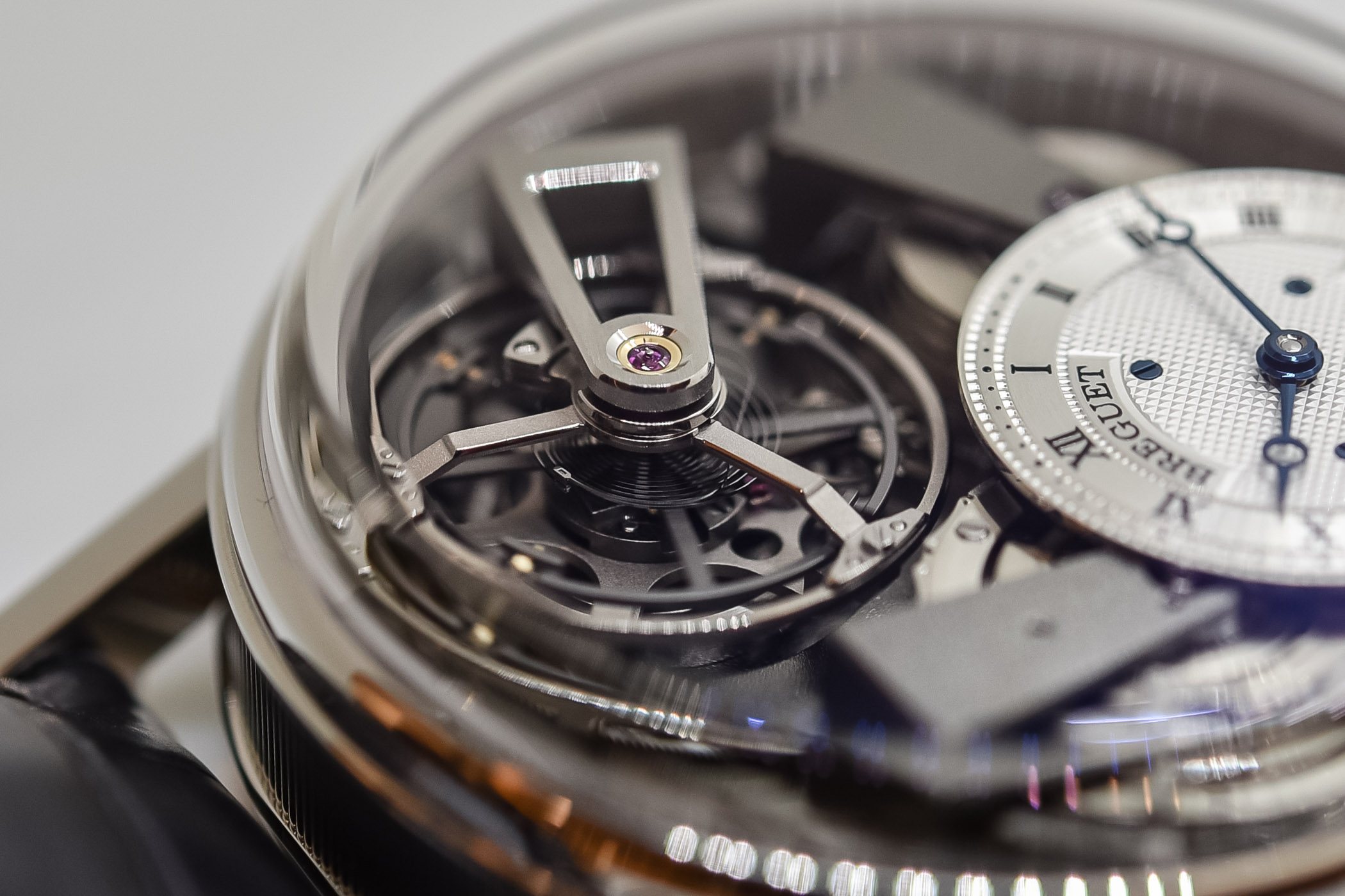
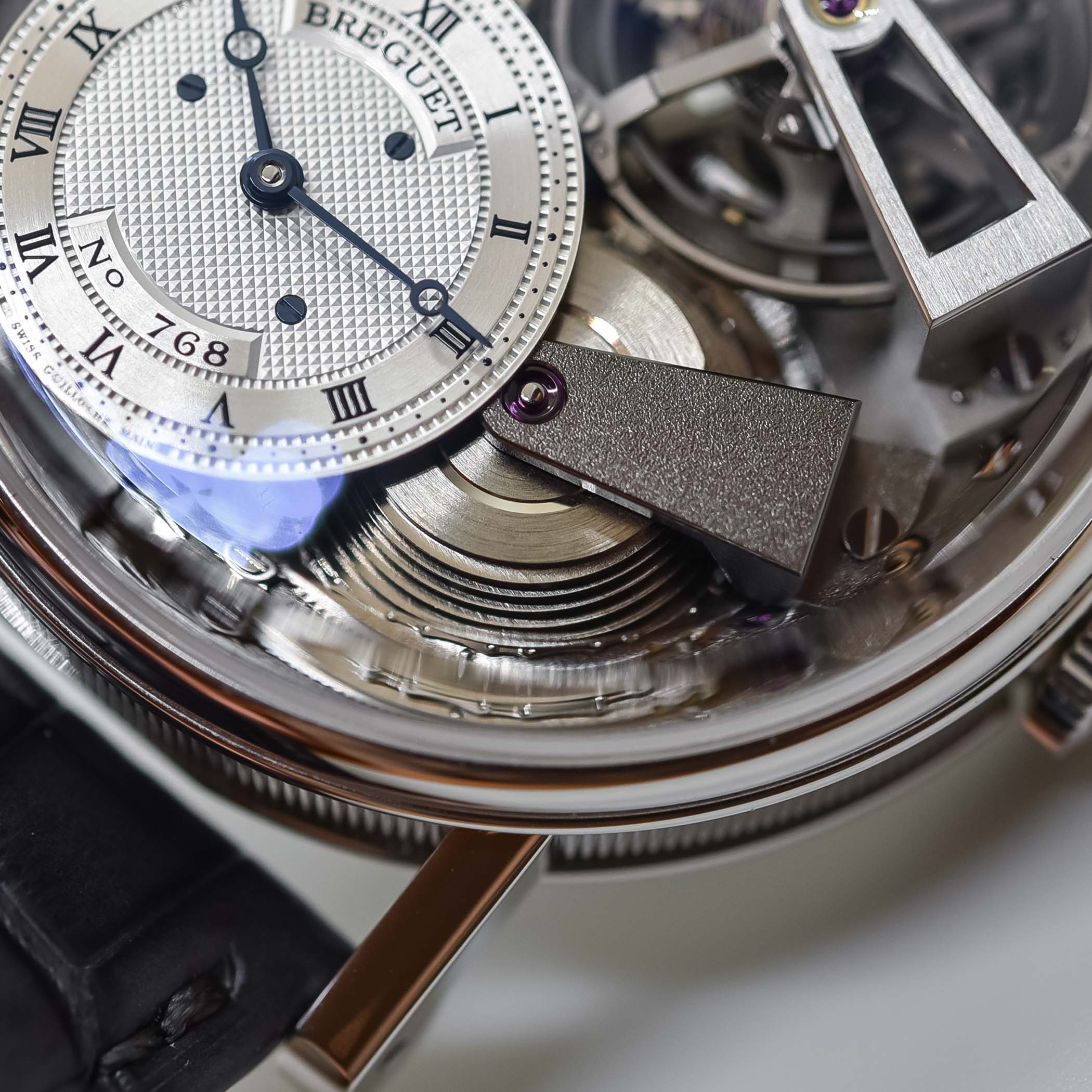
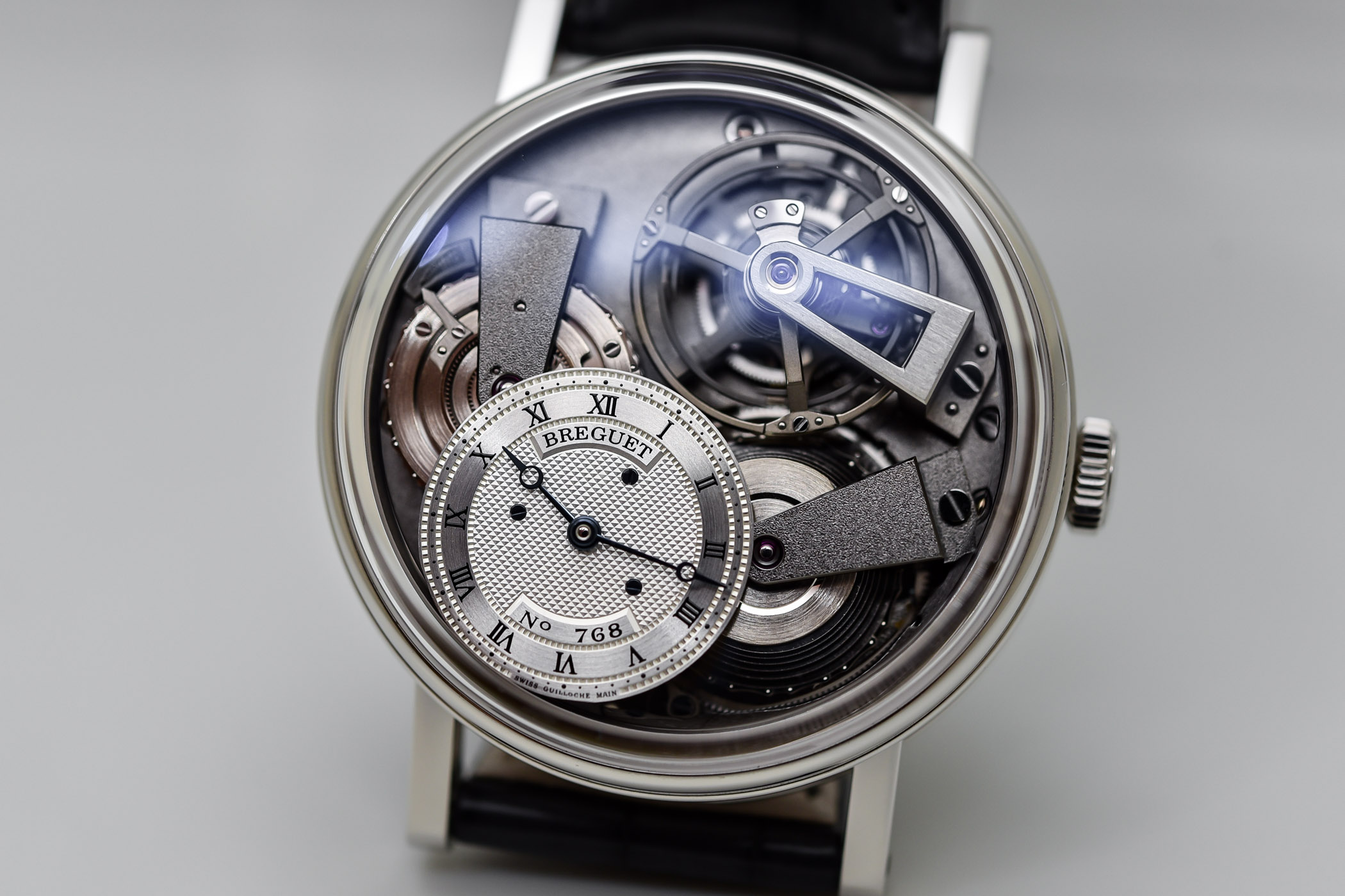
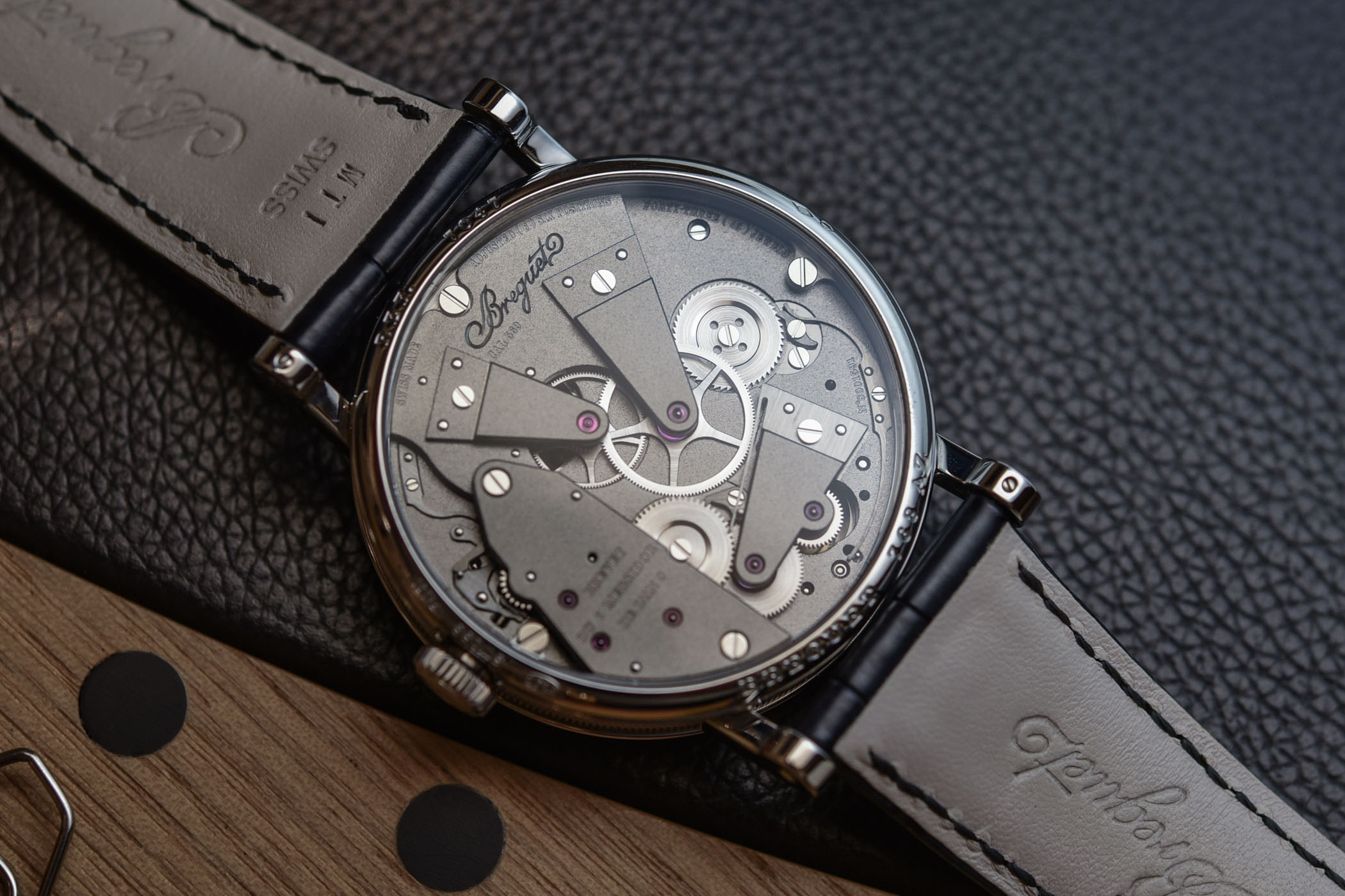
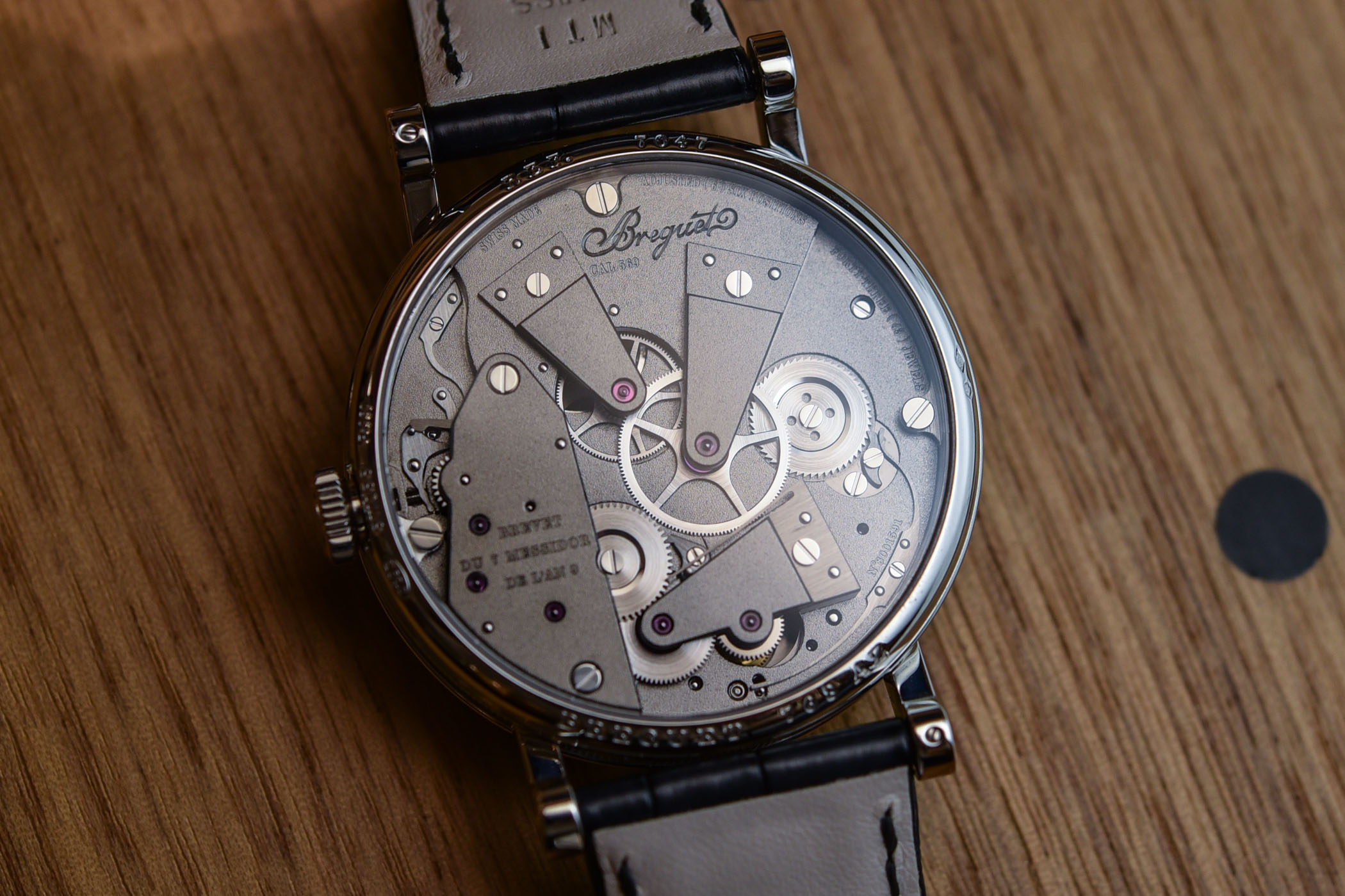



3 responses
Thank you for this review, it’s an absolutely stunning watch but why only 50h of power reserve with a 2.5 hz movement ? I am probably missing something so if someone has the answer i would be more than happy to read it 🙂
All those links and pins add friction a fusee is even power but not necessarily efficient . It is a beautiful watch!!
Thank you.